Brand repositioning is not just about changing a logo or slogan – it is a critical strategic move in today’s fast-evolving business landscape.
In this article, we’ll explore what brand repositioning truly means, when it should be implemented, and draw valuable lessons from both successful and failed repositioning campaigns across the globe, including those in Vietnam.
What is brand repositioning?
Brand repositioning is the process of redefining how a brand wants to be perceived and experienced by its target audience. This can involve changes to the brand’s visual identity, messaging, communication strategy, or even its entire business model – all to align more closely with current market conditions, evolve consumer behaviors, or long-term business objectives.
Unlike brand positioning, which typically occurs at the early stage of brand building, repositioning takes place after a brand has already established itself in the market. It becomes necessary when a business needs to “refresh” its image to remain competitive, reconnect with consumers, or address reputational issues. Repositioning is a strategic move to realign the relationship between the brand and its audience in a dynamic market environment.
a. The difference between positioning and repositioning
Brand positioning is the process of defining the space a brand wants to occupy in the minds of consumers from the outset. It includes identifying the target audience, establishing key differentiators, crafting brand messaging, and setting the tone for how the brand wants to be remembered and recognized.

Brand repositioning, on the other hand, occurs after a brand has been active for a period of time. It occurs when a company recognizes that its current positioning is no longer effective due to market shifts, increased competition, or an outdated brand perception. At this point, the brand must adjust its positioning to reinforce its core values or reach new customer segments. In simple terms, positioning is the “starting point,” while repositioning is the “strategic refresh.”
b. Why is brand repositioning important?
In an era of intense competition, rapidly changing consumer trends, and rapid technological advancements, brands must evolve to stay relevant and thrive. A well-executed brand repositioning strategy allows companies to realign with new consumer expectations, seize market opportunities, or recover from brand image challenges.
Repositioning is not just about changing a logo or a tagline – it’s a chance to redefine brand identity, strengthen emotional connections with consumers, and set a clear path for long-term growth. When done effectively, brand repositioning can mark a turning point, helping businesses increase brand equity, expand market share, and sustainably improve profitability.
Successful brand repositioning: strategic transformation done right
In an era where consumers are no longer just buying products but also seeking meaningful experiences and emotional connections, brand repositioning has become a critical strategy for businesses to stay relevant and expand their reach. No longer is it simply about updating a logo or crafting a catchy slogan — successful repositioning requires a holistic transformation, from brand mindset and visual identity to the way the brand lives in the hearts and minds of customers.
Brands that do this well don’t just refresh their image — they redefine their role in consumers’ lives, building long-term loyalty instead of chasing short-term attention. From FMCG to F&B, several Vietnamese brands have proven that with deep consumer insight, consistent execution, and the courage to innovate, brand repositioning can become a powerful launchpad for strategic growth.
Below are three standout examples of brands that have successfully “changed their look without losing their soul” — and left a lasting impression through their repositioning efforts.
a. Vinamilk – from local dairy to national icon
In 2023, Vinamilk launched a brand repositioning campaign to modernize its image and expand its global presence. The updated brand identity struck a balance between heritage and innovation, reinforcing a core message of being “young, bold, and unapologetically yourself.” This was supported by a series of major moves — from digital transformation to product portfolio expansion, helping the brand engage effectively with a new generation of consumers.
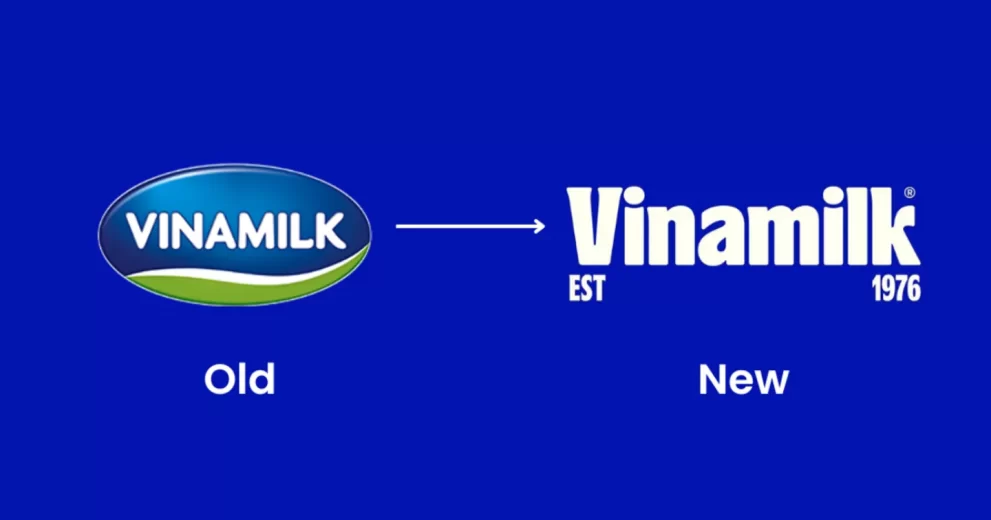
Vinamilk’s campaign demonstrates that successful brand repositioning is not just about visual change; it requires a strategic ecosystem of consistent actions. What matters is a clear strategy that stays true to the brand’s essence while creating emotional resonance with both loyal and new customers. This is a textbook case of thoughtful, sustainable, and visionary brand repositioning.
b. Highlands Coffee – “Highlands Coffee belongs to us”
With the launch of its “Highlands Coffee belongs to us” campaign at the end of 2022, this popular Vietnamese coffee chain began a new chapter in its brand journey. Brand repositioning aimed to expand community engagement while preserving its traditional roots, which reflected through modernized, friendly design language, a simplified logo, and a more cohesive color scheme that felt warmer and more recognizable amid fierce F&B competition.
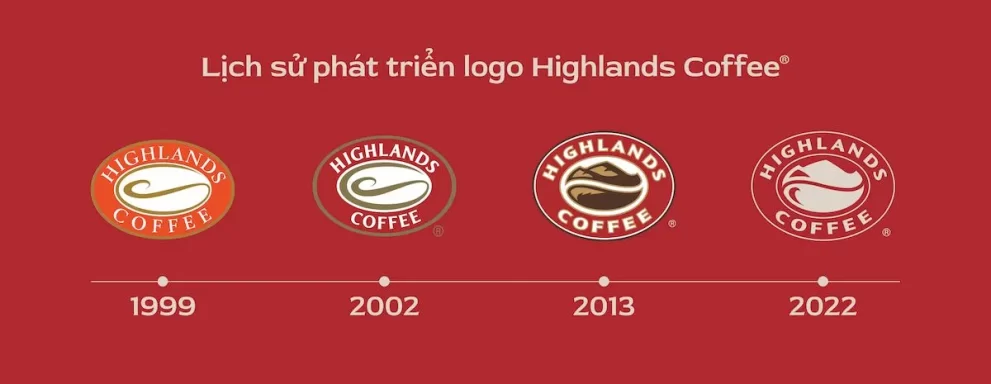
This shift reflects a contemporary approach to brand positioning: beyond selling products, brands now sell empathy, belonging, and shared values. Highlands Coffee chose a gentle but meaningful repositioning path that evoked a sense of “togetherness” across customer segments, a valuable lesson for brands in 2025 seeking to build truly loyal communities.
c. KATINAT – “a journey to discover new local flavors”
In April 2024, KATINAT announced its brand repositioning by reintroducing itself as “KATINAT Coffee & Tea House,” with a renewed focus on celebrating Vietnam’s agricultural heritage. Beyond changing its name and logo, the brand launched a membership app, revamped its menu, and introduced locally inspired beverage lines, all reinforcing its vision of “conquering new flavor frontiers.”
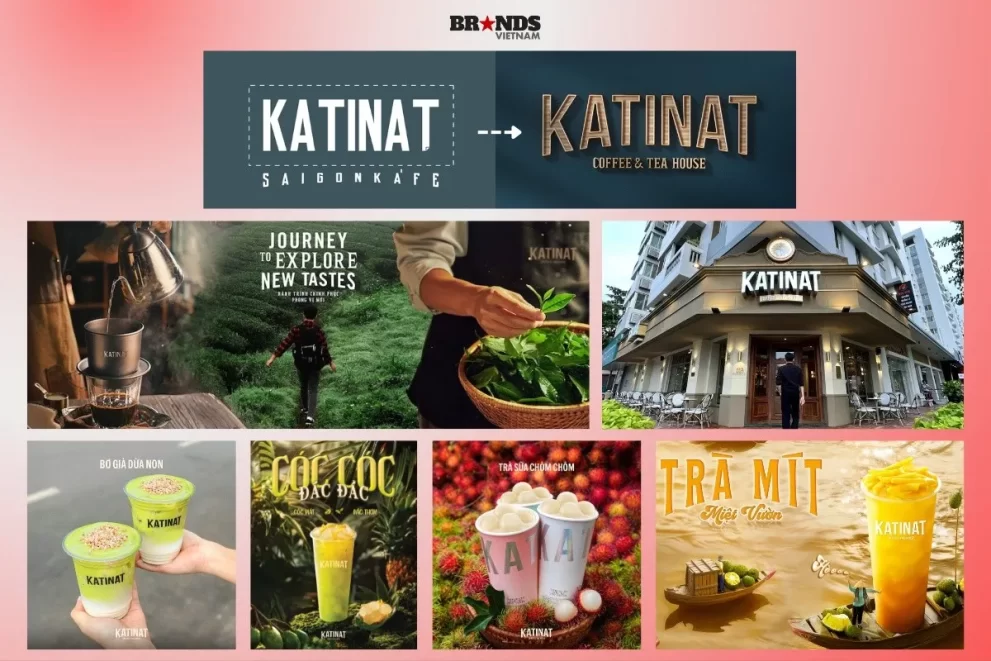
This campaign is a prime example of how brand repositioning must go hand-in-hand with product innovation and customer experience enhancement. KATINAT didn’t just update its look, it redefined how it connects with consumers, shifting from a trendy urban café to a welcoming “house” for specialty tea and coffee. In Vietnam’s booming F&B market, KATINAT shows that when you get your positioning right, you can preserve your brand DNA while leading the next trend wave.
Brand repositioning mistakes: Cautionary tales from major names
In today’s fiercely competitive business landscape, brand repositioning is not just a cosmetic update. It’s a critical strategy that allows companies to adapt to shifting markets and stay relevant to consumers. However, the process requires more than a new logo or slogan; it demands a deep understanding of brand values, customer behavior, and evolving social trends.
When repositioning efforts are carried out without a clear strategy, driven by emotion, or executed inconsistently, the consequences can be serious. Brands risk losing customer trust, seeing a decline in revenue, or even facing total collapse.
Here are three notable examples of repositioning missteps that proved costly.
a. GAP – The failed logo redesign in 2010

In 2010, iconic fashion brand GAP surprised the public by changing its logo after 20 years of consistency. The new design faced immediate backlash from both consumers and industry experts, who felt it was too sudden, emotionally disconnected, and failed to reflect the brand’s core identity.
Just six days after the rollout, GAP was forced to revert to the old logo due to intense criticism, ultimately admitting the mistake and suffering significant damage to its brand credibility.
This case illustrates that successful repositioning isn’t just about strategic intent. It also requires consistency in every detail, particularly visual elements like logos. Even surface-level changes must be grounded in research, guided by a clear roadmap, and aligned with consumer sentiment. Otherwise, the result can be backlash, a breakdown in trust, and negative financial impact.
b. Tropicana – A packaging redesign that made the brand invisible on the shelf
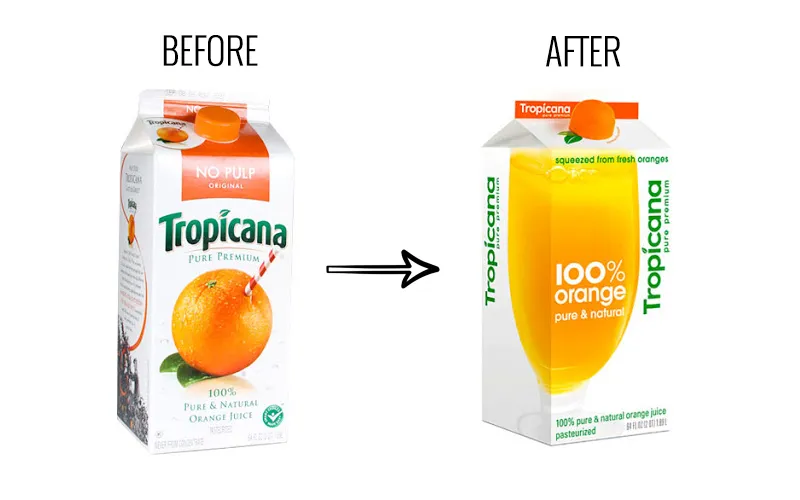
In 2009, Tropicana — PepsiCo’s well-known orange juice brand — underwent a visual brand refresh, aiming to appear more modern and premium. The company replaced its iconic packaging featuring an orange with a straw — a design strongly associated with freshness and authenticity — with a minimalist image of a glass of orange juice. Typography and layout were also simplified to match flat design trends.
However, this abrupt change lacked continuity and made the product unrecognizable to many loyal consumers. Within two months, Tropicana experienced a 20% drop in U.S. sales, amounting to roughly $30 million in losses. Many shoppers reported they couldn’t find the familiar product on store shelves, or mistook it for a low-cost competitor. The new packaging was criticized for stripping away the brand’s identity and emotional resonance.
Eventually, Tropicana had to revert to the original packaging, acknowledging the failure of its visual repositioning. The key lesson here is clear: when a brand holds strong visual equity, changes in design must be made cautiously, with strategic clarity and a deep understanding of what emotionally connects with consumers.
c. RadioShack – Losing brand direction after rebranding as “The Shack”
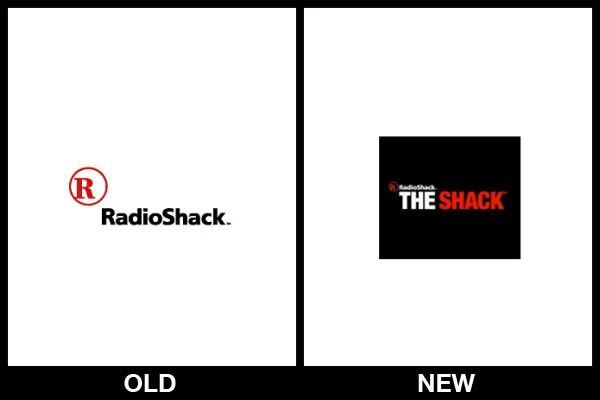
In 2009, American electronics retailer RadioShack launched a bold repositioning campaign to modernize its image and appeal to younger consumers. As part of this initiative, the brand shortened its name to “The Shack” and introduced a new logo, refreshed messaging, and updated marketing channels. The goal was to create a more approachable and trendy image aligned with the tech-savvy generation.
However, the change had the opposite effect on the brand’s long-time customers, who had trusted “RadioShack” as a reliable source for electronics and components. Removing the word “Radio” disconnected the brand from its original category and left consumers confused about what “The Shack” actually represented.
The new identity lacked clear meaning and failed to preserve the brand equity that had been built over decades. As a result, the repositioning didn’t generate the expected engagement or sales lift. Instead, it contributed to a perception that the brand had lost its sense of purpose, accelerating its decline in a market already dominated by e-commerce competitors.
FAQ
1. What is brand repositioning, and why is it important?
Brand repositioning is the process of redefining how a brand wants to be perceived by its target audience. It becomes essential when the existing strategy no longer matches market expectations, consumer behavior shifts, or the brand wants to target a new segment. Repositioning helps brands stay competitive and relevant.
2. When should a business consider brand repositioning?
A business should reposition when its brand image becomes outdated, customer engagement declines, competition increases, or when entering new markets. These signals indicate that the brand needs a refreshed strategic direction to continue growing.
3. Is brand repositioning only about changing the logo or slogan?
No. Brand repositioning goes far beyond visual changes. It involves redefining brand values, communication strategy, product experience, and how the brand interacts with customers. Visual identity updates are only one component of the overall strategy.
4. What are the major risks of brand repositioning?
Key risks include losing core brand identity, confusing loyal customers, changing too abruptly, or implementing a strategy without proper research. Poor repositioning can lead to negative consumer reactions and reduced sales.
5. What role does Smartcom play in brand repositioning?
Smartcom provides end-to-end communication solutions, helping brands develop strategic repositioning plans and execute integrated content and media campaigns. The agency ensures brands refresh their identity while maintaining emotional relevance with customers.
Conclusion
From successful repositioning cases such as Vinamilk and Highlands Coffee to cautionary lessons from Tropicana and GAP, it is evident that brand repositioning plays a vital role in helping businesses adapt, grow, and stay competitive in a rapidly evolving market. Repositioning is not just about updating a logo or slogan, but rather a comprehensive strategic process that redefines brand identity, deepens emotional connections with consumers, and enhances long-term brand value.
With years of experience in communication services, Smartcom supports businesses in developing holistic branding strategies, brand repositioning, and implementing integrated content, visual, and multi-channel communication campaigns. More than just delivering a refreshed look, Smartcom helps brands build lasting emotional bonds with customers, thereby elevating brand perception and driving sustainable growth in today’s highly competitive landscape.





